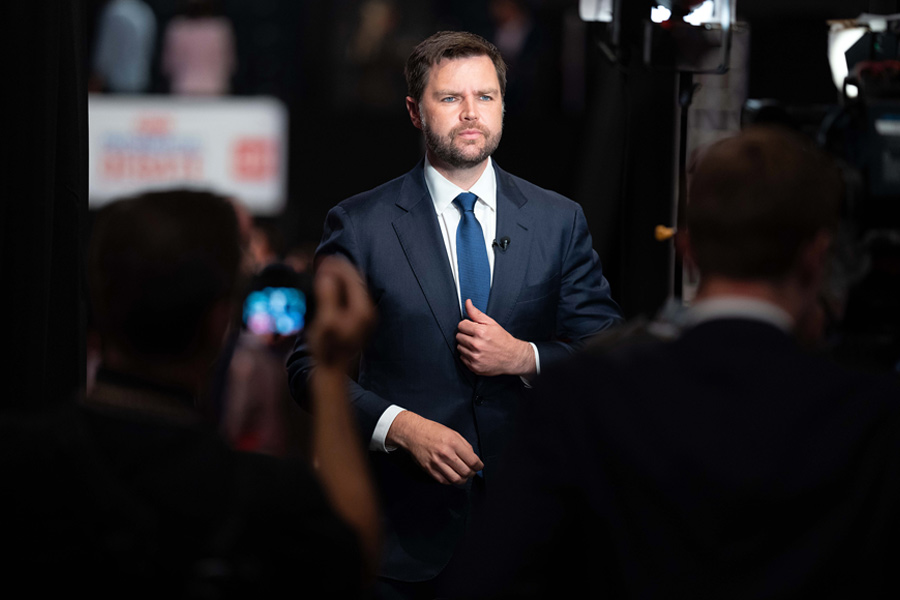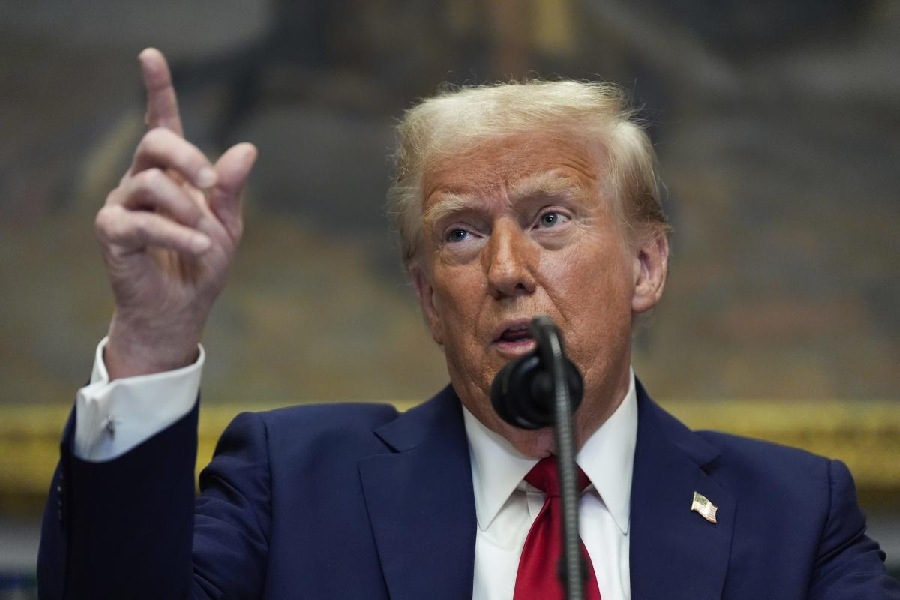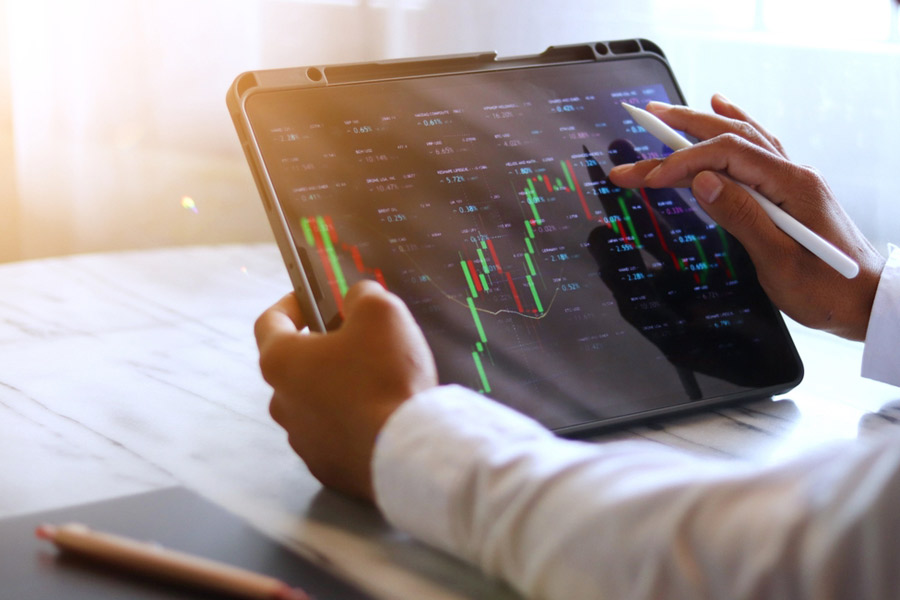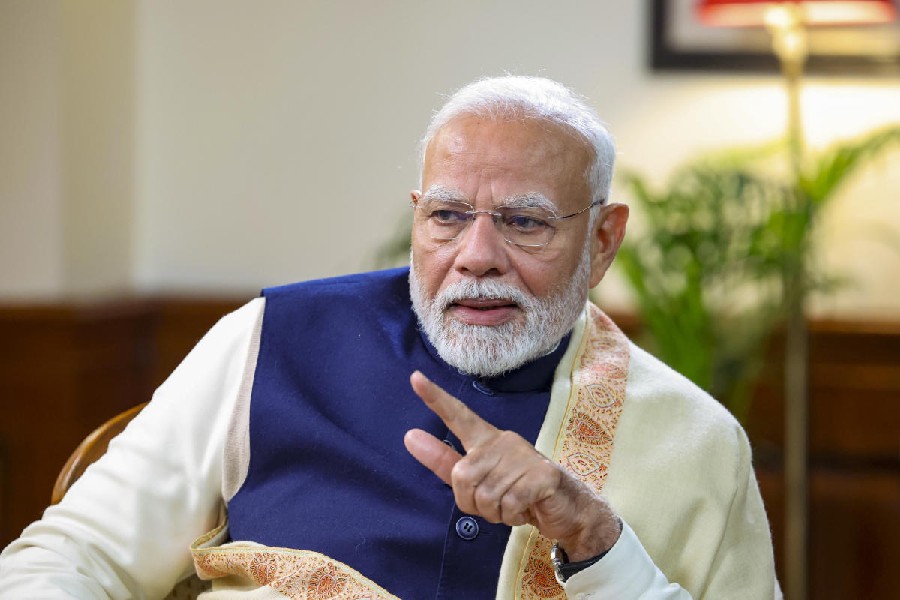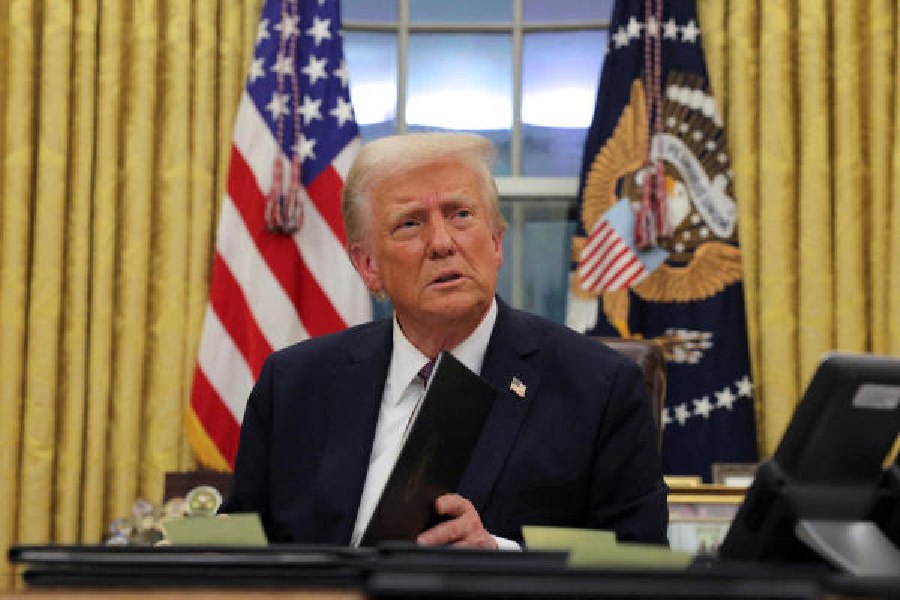Donald Trump’s selection of Ohio Sen. JD Vance to be his vice-presidential nominee pairs him with a kindred spirit on trade, taxes and a tough stance on China. But it is their shared affinity for a weak dollar that could have the broadest implications for the United States and the global economy.
In most cases, Trump likes his policies to be “strong,” but when it comes to the value of the dollar, he has long expressed a different view. Its strength, he has argued, has made it harder for U.S. manufacturers to sell their products abroad to buyers that use weaker currencies. That’s because their money is worth so much less than the dollars that they need to make those purchases.
“As your president, one would think that I would be thrilled with our very strong dollar,” Trump said in 2019, explaining that U.S. companies such as Caterpillar and Boeing were struggling to compete. “I am not!”
The dollar has been the world’s dominant currency since World War II, and central banks hold about 60% of their foreign exchange reserves in dollars, according to the Congressional Research Service.
The United States has maintained a “strong dollar” policy since the 1990s, when Robert Rubin, the Treasury secretary at the time, declared that he did not view it as a threat to the ability of U.S. business to compete abroad. The United States avoids taking measures to steer the strength of the dollar, and Treasury secretaries tend to argue that currency values should be determined by market forces. When countries such as China have acted to weaken their currencies, the U.S. has shamed them as currency manipulators.
It is not clear how Trump would go about weakening the dollar. His Treasury Department could try to sell dollars to buy foreign currency or try to persuade the Federal Reserve to just print more dollars.
A concerted shift in policy could have reverberations for international commerce of all kinds. The depreciation of the dollar, along with Trump’s plan to increase tariffs on imports, could also reignite inflation when price increases are finally easing.
“Depreciation would add to inflation,” said Mark Sobel, a former longtime Treasury Department official who is now the U.S. chair of the Official Monetary and Financial Institutions Forum. “So would tariff hikes. Plus, a highly expansionary fiscal policy would add to demand pressures.”
Skeptics of a strong dollar say it is responsible for making U.S. exports too costly abroad at the expense of American workers, and seeking to devalue it aligns with the populist ethos of Trump and Vance.
At a Senate hearing last year, Vance echoed Trump’s concerns while questioning Jerome Powell, the Federal Reserve chair. He said the dollar’s status as the reserve currency, which means it is widely held in central banks around the world and accepted for most kinds of transactions, was a subsidy for U.S. consumers but a tax on U.S. manufacturers.
“I know the strong dollar is sort of the sacred cow of the Washington consensus, but when I survey the American economy, and I see our mass consumption of mostly useless imports on the one hand and our hollowed-out industrial base on the other hand, I wonder if the reserve currency status also has some downsides, and not just some upsides as well,” Vance said.
Powell responded by noting that the United States benefits from its reserve currency status, which makes it possible to buy goods all over the world with dollars. He also said there was not an obvious currency to replace it.
The strength of the dollar has gained global attention this year as its value appreciated compared with other countries’ currencies as a result of higher interest rates. That can complicate matters for central banks worldwide that are grappling with inflation, and by making American exports more expensive, it can widen the U.S. trade deficit, which Trump loathes.
The 2024 Republican Party platform calls for keeping the dollar as the world’s reserve currency, but Trump and Vance could still try to weaken it if elected this year. Robert Lighthizer, Trump’s former trade adviser, who could be a candidate to be his next Treasury secretary, has been mulling ways to devalue the dollar if the former president wins, Politico reported this year.
Trump could try to devalue the dollar either by signaling a policy shift, appointing a new Federal Reserve chair when Powell’s term ends in 2026 who is likely to cut interest rates, or by trying to use the threat of tariffs to compel other countries to act to strengthen their own currencies.
Brad Setser, a fellow at the Council on Foreign Relations who served in the Biden administration’s trade office, said the Trump-Vance team faced a “core contradiction” in its economic agenda. He noted that Trump’s proposed tax cuts would probably widen the fiscal deficit and push up interest rates, supporting the dollar. At the same time, Trump’s trade agenda would most likely encourage other countries to weaken their currencies relative to the dollar in response to his tariffs.
Trump has called for imposing a 10% levy on all imports and a 60% duty on imports from China.
“If you punish other countries, hit them with tariffs, reduce the value of their exports, the effect tends to be their currencies weaken,” Setser said.
Lawrence Summers, who served as Treasury secretary in the Clinton administration, said a move to devalue the dollar could lead to “stagflation” — when prices rise and growth slows.
“If a country’s government does not care about the value of its money, why should anyone else?” Summers said. “Raising tariffs while devaluing the dollar are self-imposed supply shocks.”
Despite his interest in a weaker dollar, Trump has given mixed messages on the matter.
In 2017, he told The Wall Street Journal that the dollar “is getting too strong.” The next year, however, Trump told CNBC that “ultimately I want to see a strong dollar” after remarks by his Treasury secretary, Steven Mnuchin, suggesting that a weaker dollar could be good for trade led to a sharp decline in the dollar index.
But this April, as the dollar surged against the yen, Trump said the strength of the dollar was going to put U.S. companies out of business.
“It sounds good to stupid people, but it is a disaster for our manufacturers and others,” Trump said on social media.
The New York Times News Service

